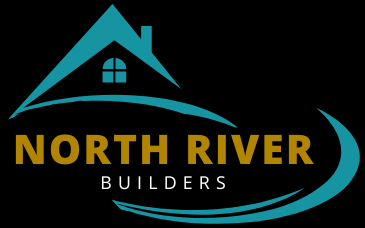How to Plan a Home Addition: Everything You Need to Know Before Expanding Your Home
For many homeowners, the thought of adding more space to an existing home can feel like the perfect solution to cramped living conditions or outdated layouts. Whether you’re looking to add an extra bedroom, expand your kitchen, or create a dedicated office, a home addition offers the opportunity to make your space more functional while increasing its value.
But before you dive into a project like this, it’s essential to plan carefully. Here’s everything you need to know about planning a home addition in the Twin Cities, including cost considerations, permits, and the best types of additions for maximizing your investment.
1. Know Your Budget: How Much Does a Home Addition Cost?
One of the first things homeowners ask is: How much will this cost? The answer depends on the scope of your project and the materials you choose. On average, a home addition in the Twin Cities can range from $50,000 to over $150,000, depending on the size and complexity.
Key Factors Affecting Cost:
Size of the Addition: Larger projects, like adding a second story or a new wing to the home, will naturally cost more than smaller additions like bumping out a kitchen or adding a sunroom.
Material Choices: High-end finishes and materials can increase costs, but they often result in a higher return on investment (ROI).
Utilities & Infrastructure: Consider whether you’ll need to extend plumbing, HVAC, or electrical systems to accommodate the new space.
To avoid surprises, it’s essential to have a detailed conversation with your builder to create an accurate budget.
2. Understand Local Permits and Zoning Requirements
When planning a home addition in the Twin Cities, you’ll need to navigate local building codes, permits, and zoning regulations. These rules vary by city and may impact the size and type of addition you can build.
Key Considerations:
Setback Requirements: Many cities have rules about how close your home can be to the property line, which can affect how large your addition can be.
Neighborhood Restrictions: If you live in a historic district or a neighborhood with a homeowners' association (HOA), there may be additional guidelines to follow.
Permits: Your contractor will need to secure building permits before construction can begin. Make sure this is factored into your timeline, as permits can take time to process.
3. Choose the Right Type of Addition for Your Needs
Not all home additions are created equal. Choosing the right type of addition depends on your goals and how you intend to use the new space. Here are a few popular options that are perfect for adding both space and value to your home:
Kitchen Extension: A popular choice for homeowners who want more cooking, dining, or entertaining space. An expanded kitchen with modern appliances and a spacious layout can significantly increase your home’s value.
Master Suite Addition: Adding a master suite with a private bathroom and walk-in closet can make your home feel more luxurious while giving you a personal retreat.
Second-Story Addition: If your lot size limits horizontal expansion, a second-story addition can give you extra bedrooms, a home office, or a guest suite.
Sunroom or Four-Season Porch: These additions provide extra living space and allow you to enjoy the Minnesota seasons in comfort. A four-season porch adds functional square footage year-round.
4. Maximize Your ROI: Additions That Boost Home Value
One of the key benefits of adding on to your home is the potential increase in property value. However, not all additions offer the same return on investment (ROI). According to Remodeling Magazine’s Cost vs. Value Report, certain types of additions consistently offer better ROI in the Twin Cities area:
Kitchen extensions and second-story additions tend to bring the highest returns.
Four-season porches or sunrooms also offer strong ROI, especially in regions where outdoor space is limited.
Adding a master suite can dramatically increase both resale value and comfort, particularly if your home currently lacks a primary bedroom with an en-suite bathroom.
To ensure a high return, focus on functional spaces that buyers are most interested in. Your contractor can help you determine what makes sense for your budget and long-term goals.
5. Plan for the Disruption: Living Through a Home Addition
Home additions can be disruptive, especially if you're staying in your home during construction. It’s important to plan for how you’ll manage day-to-day life while construction is underway.
Things to Consider:
Timeframe: A typical home addition project can take anywhere from a few months to a year, depending on the complexity. Make sure you understand the timeline upfront and plan accordingly.
Living Arrangements: Depending on the extent of the work, you may need to make temporary adjustments, such as relocating to another part of the house or finding short-term accommodations.
Noise and Dust: Prepare for some inconvenience. Working with an experienced contractor who keeps a clean job site and follows a detailed schedule can minimize disruptions.
Conclusion: Is a Home Addition Right for You?
If you love your neighborhood but need more space, a home addition can be the perfect solution. With the right planning, budget, and professional team, you can transform your current home into your dream home without the hassle of moving.
At North River Builders, we specialize in creating beautiful, functional home additions that fit your lifestyle. From budgeting and design to permits and construction, we handle every step of the process so you can focus on enjoying your new space.
Ready to explore your options? Contact us today to schedule a consultation and start planning your Twin Cities home addition!
